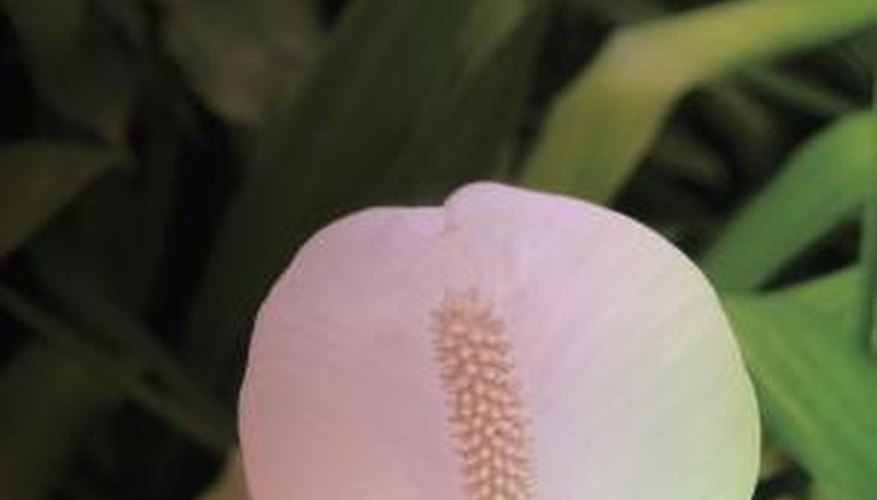The peace lily (Spathiphyllum x clevelandii) isn't actually a lily (Liliaceae family) at all; it's a member of the Araceae family. You can grow many lilies, such as tiger lilies and Easter lilies outside and they will survive the winter in most places in the United States. Whether you can grow Spathiphyllum clevelandii outside depends on where you live.
Natural Range
In nature, peace lilies originally grew in subtropical Central and South America including Mexico, Costa Rica, Panama and Peru. The peace lily is also found across the Pacific in Malaysia and the Philippines. Found in rainforests, in the shade of larger trees, peace lilies receive very little direct sunlight and have adapted to live in lowlight conditions. Their native environment stays between 21.1 and 32.2 degrees Celsius year round and receives as much as 400 inches of rain annually.
- In nature, peace lilies originally grew in subtropical Central and South America including Mexico, Costa Rica, Panama and Peru.
Growing Outdoors in Some States
Some sections of the United States stay warm enough to plant the peace lily outdoors year-round. The peace lily prefers USDA zones 10 and 11 but can sometimes be maintained outdoors for years in zone 9 in protected areas. According to the USDA zone maps, you can plant the peace lily in sheltered spots along the west coast of California, in the south of California and along the southeastern coast of California, and in the southwestern corner of Arizona. You can also grow peace lilies outdoors from the southern tip of Texas and along the Gulf Coast up into Louisiana. You can also grow the peace lily outdoors in southern Florida where conditions closely match its native environment. In some dry areas, you may have to provide copious amounts of water or place your peace lily near a pond to keep the humidity high. The peace lily can be grown outdoors year-round in Hawaii, where some native Spathiphyllum species are found.
- Some sections of the United States stay warm enough to plant the peace lily outdoors year-round.
- You can also grow the peace lily outdoors in southern Florida where conditions closely match its native environment.
Planting Outdoors for the Summer
While you cannot plant the peace lily outdoors year-round in northern climates, the plant will benefit from spending its summer outside. You can keep the lily in its pot outdoors for ease of fall removal back inside your house, or transplant the peace lily to the garden. In either case, select a shaded spot protected from high wind and move your plant outside after temperatures reach daytime highs of near 21.1 degrees Celsius. A low spot that is naturally damp but still has adequate drainage is an ideal location for your peace lily. Bring the lily inside when nighttime temperatures begin to dip below 15.6 degrees Celsius.
- While you cannot plant the peace lily outdoors year-round in northern climates, the plant will benefit from spending its summer outside.
- In either case, select a shaded spot protected from high wind and move your plant outside after temperatures reach daytime highs of near 21.1 degrees Celsius.
Keeping Indoors
An indoor peace lily prefers conditions that are similar to its native rainforests. Place your lily in bright, indirect sunlight and water it frequently, as much as three times a week. As you can imagine, peace lilies also desire high humidity. Put the peace lily on top of a tray of gravel and fill the tray with water to increase the humidity locally.
- An indoor peace lily prefers conditions that are similar to its native rainforests.
- Put the peace lily on top of a tray of gravel and fill the tray with water to increase the humidity locally.
